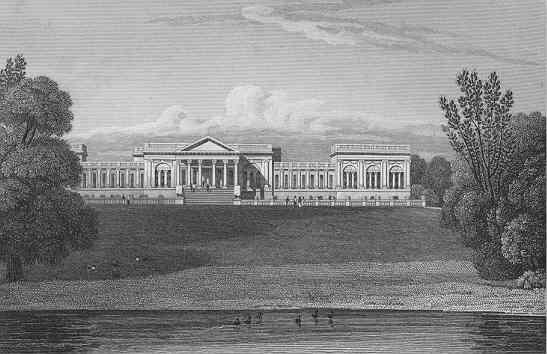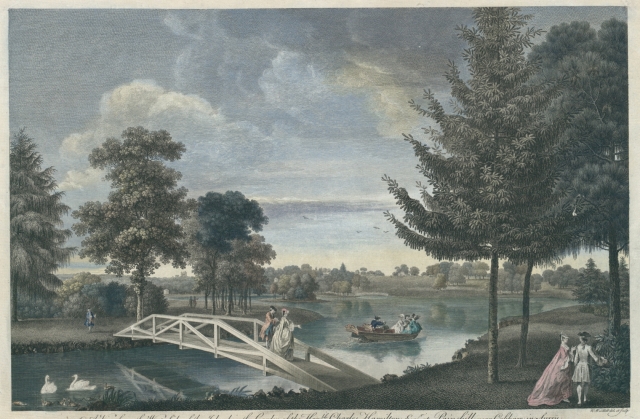March 1806 began well for the Duchess of Devonshire as she held a ball for the social elite. The whole suite of magnificent apartments was thrown open at ten in the evening and about eleven ‘the fashionables’ arrived, including The Prince of Wales, Duke of Sussex plus a whole host of lords, earls, counts and their respective spouses. There were supper tables consisting of every delicacy of the season and as you would expect, plenty of dancing and of course, with Georgiana’s love of gambling, there were card tables. It was said that Georgiana never appeared in better health, with the whole party dancing the night away, until five in the morning.

A week or so later, Georgiana was to hold a supper party and according to the ‘Fashionable Arrangements for the Week’, all was well, or so it would appear. It wasn’t until March 21st that the media first reported Georgiana as being dangerously ill. No further details of the cause were given, but it was reported a few days later that she was making a good recovery from her recent indisposition.
By March 28th however, her health was in serious decline, she was suffering from a fever and did not appear to be showing any signs of making a speedy recovery. So well thought of was Georgiana that there was a constant stream of well-wishers arriving at her London home, Devonshire House, with none more anxious than the Countess of Uxbridge who was with her constantly as was Lady Melbourne, his Grace and all members of her family since the fever began. At 3.30am on the 30th March 1806, Georgiana’s life came to an end.
The cause of death was believed to be due to an abscess on her liver, but a post mortem was carried out to confirm this. Her body was opened up at seven in the morning in the presence of five physicians who had attended her whilst she was alive. A consultation was held afterwards, and the gentleman were much divided in their opinion on the cause of death, they felt it was either gallstones or an abscess on the liver, but it was ultimately agreed that the abscess was the cause.
It would appear that the whole of her social circle was shocked by her untimely death, aged only 48, and so upset were they by this news that many retired to their country home, it was not a time to be socialising, even the Prince of Wales left for Brighton. The Duke of Devonshire and family remained at Devonshire House until after the funeral, then left London to visit the Prince of Wales at Brighton.

The Morning Advertiser of 2 April 1806 reported that Georgiana was to be buried at Chatsworth as it was a place she loved and was loved by all on the estate; however this was suddenly changed and she was buried at All Saints Church, better known as Derby Cathedral.

Needless to say, the newspapers all paid tribute to her; they loved Georgiana, despite some mockery of her involvement in politics and her some of her more unique tastes in fashion. The Bath Chronicle described her being:
A woman more exalted in every accomplishment of rapturous beauty, of elevated genius and of angelic temper, has not adorned the present age.

Georgiana’s funeral took place on April 9th. At five o’clock in the morning, the procession left Devonshire House in the following order –
Eight mutes on horseback, an attendant on horseback carrying the coronet and cushion, the hearse drawn by eight horses, the deceased’s private coach and two morning coaches, containing the principal family and Mr Wilson of The Strand, the undertaker.
The coffin, which is very elegant, is six feet two inches in length by twenty three inches. It is covered with a very rich crimson velvet and ornamented with uncommonly rich and beautiful chased ornaments. At the head are placed a variety of appropriate devices, and at the foot a highly chased weeping figure, admirably executed. The inscription plate contains the arms of the two great families, namely Cavendish and Spencer Underneath is written – The Most Noble Georgiana Duchess of Devonshire, died the 30th March 1806, in the 48th year of her age. The coffin had eight gilt handles on each appeared her initials G.D.

Burial register, Derby
ELEGIAC LINES
ON THE DEATH OF THE DUCHESS OF DEVONSHIRE
Faint are the numbers, and unskill’d the Muse,
Who vainly shall attempt to paint her worth;
Afflictions tear, what heart, or eye refuse,
To her whose virtues grac’d her rank and birth.
Well might our Gracious Prince then sorrowing say,
“Of England’s fairest daughter, none remain
More kind or amiable” – diffusely gay,
Her genuine merits shone in fashion’s train.
A mother’s sacred duties to discharge,
She sought retirement from the giddy town;
Taught the young mind with freedom to enlarge,
And form’d them good and virtuous like her own.
By all belov’d, by ev’ry heart deplor’d
Still mem’ry mourns amidst a nation’s sighs;
And mem’ry still her virtues shall record,
Virtues that waft her to her native skies
FRANCESCA JULIA
You can find out more about the deaths of 5th Duke of Devonshire and his second wife, Bess – Reunited in death, the 5th Duke of Devonshire, Georgiana and Bess
Sources
Morning Post 01 March 1806
Stamford Mercury 21 March 1806
Morning Post 02 April 1806
Morning Post 03 April 1806
Morning Post 07 April 1806









